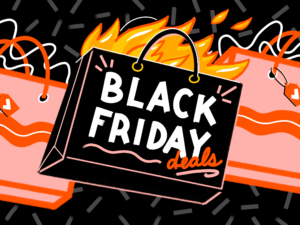The Love Machine

As the cold of winter sets in while red-and-white heart-shaped decorations adorn storefronts and front lawns alike, we are suddenly reminded that Valentine’s Day is upon us. However, the simple sentiment that comes along with the special day has long been overshadowed by the pressures that several industries who benefit from the holiday have put on the population. As we rush out to buy flowers, chocolate, jewelry and other chotchkies for our loved ones, we are reminded of one thing: love certainly isn’t cheap.
As a nation, it is expected that sales will surpass $19 billion: So, whether you’re out on a fancy dinner date or eating a box of chocolates alone on February 14th, a handful of companies will still be profiting off of your celebration.
According to the National Retail Federation, the average American is expected to spend $134 on Valentine’s Day gifts and cards this year, a four dollar increase from 2015. With an average of 67% of the gift money going to a spouse or significant other, the rest is split among family members, friends, co-workers, pets, and teachers. Additionally, while men will spend approximately $190.53 this year, women will spend $96.58 on gifts. Of course, you can’t forget Fido: In the upcoming week, 21.2 percent of Americans will spend a grand total of $703 million on Valentine’s Day gifts (popular items include Collars, leashes, treats, toys, costumes, pet pampering and gift boxes) for their pets.
However, the most surprising fact about this holiday is that Millennials have become the predominant group when it comes to the sum of money invested in gifts. According to Valentine’s Day Spending Predictions by Forbes Magazine, “The largest spending age group is predicted to be 25 to 34 year olds, who will shell out approximately $213.04 on the holiday. By contrast, 35 to 44 year olds will spend about $176.21. This is somewhat surprising, as many Millennials have yet to come into their most fertile years of earning power, yet they plan to spend more than their older counterparts.”
Yet, in order to make sure that revenue will be as high as possible, storefronts compete around nearly every single holiday. Businesses go through extreme measures to formulate irresistable sales, hang festive decorations (reminding customers and getting them in the mood of shopping for the upcoming holiday), and attract customers: and it all starts with the window, which acts as a business card, catalog, and invitation inside the store. The preparations for creating the ideal storefront window generally start at the beginning of January to ensure that it is up and running by the first of February.
“The stores [are] set up so early, [the merchandise] is in your face,” said Tina Donegan of Ronkonkoma, a front desk supervisor and manager of Vanco Pharmacy located on Vanderbilt Parkway in Commack. “As soon as one holiday is done, the next one is already set up for.”
While the pharmaceutical aspect of the store is tied to its name, Vanco also provides stationery and seasonal products to its local customers. “To set up for the upcoming holiday, [we offer] all the assorted candy in the front and [bear] beanies for every seasonal occasion. In addition, [we] have a distinctly seasonal aisle for whatever [the] holiday is, various add ons on the counter, a gift area dedicated to anything heart-shaped and a decorative store-front window.”
No matter how you spend your upcoming Valentine’s Day, whether it be with friends, family or a significant other, you can guarantee that you’ll be included in the almost $19 billion expected to accumulate in sales later this week.








